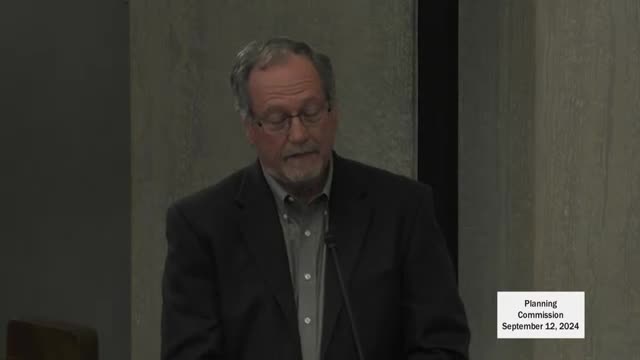Controversial zoning changes spark heated community debate
September 12, 2024 | Other Public Meetings, Oklahoma City, Oklahoma County, Oklahoma
This article was created by AI summarizing key points discussed. AI makes mistakes, so for full details and context, please refer to the video of the full meeting. Please report any errors so we can fix them. Report an error »

During a recent government meeting, discussions centered on a proposed Planned Unit Development (PUD) that has sparked significant debate among local stakeholders. Key topics included traffic signal requests, building height variances, and environmental protections.
The meeting began with a focus on traffic management, where officials noted that any requests for new traffic signals would be evaluated based on accident history and proximity to existing signals. Concerns were raised about potential congestion if signals were placed too closely together.
A major point of contention was the proposed height of buildings within the development. Some commissioners expressed concern over the request to increase building heights from two to three stories, arguing that it could negatively impact neighboring properties. Proponents of the height increase argued that it would allow for better amenities and green spaces, ultimately enhancing the development's quality.
The developers committed to specific building locations as depicted in their site plan, which included a significant landscape buffer and a masonry wall to mitigate impacts on adjacent properties. However, some neighbors voiced their apprehensions, referencing a previous agreement that limited building heights to two stories. They emphasized the importance of maintaining a step-down effect in building intensity as development approached residential areas.
In response to these concerns, the commission discussed potential compromises, including limiting the height of certain buildings to two stories and ensuring that mature trees would be planted within the landscape buffer. The developers agreed to a requirement for four-inch caliper trees, which would provide substantial greenery and visual appeal.
Environmental considerations were also a focal point, particularly regarding a creek running through the property. The commission sought assurances that no development would occur within a designated setback area to preserve the natural state of the creek and surrounding wetlands.
Ultimately, the commission moved to approve the PUD with specific technical evaluations, including the limitation of certain buildings to two stories and the establishment of a no-development zone along the southern boundary. The decision reflects a balance between development interests and community concerns, aiming to foster a sustainable and aesthetically pleasing environment.
The meeting began with a focus on traffic management, where officials noted that any requests for new traffic signals would be evaluated based on accident history and proximity to existing signals. Concerns were raised about potential congestion if signals were placed too closely together.
A major point of contention was the proposed height of buildings within the development. Some commissioners expressed concern over the request to increase building heights from two to three stories, arguing that it could negatively impact neighboring properties. Proponents of the height increase argued that it would allow for better amenities and green spaces, ultimately enhancing the development's quality.
The developers committed to specific building locations as depicted in their site plan, which included a significant landscape buffer and a masonry wall to mitigate impacts on adjacent properties. However, some neighbors voiced their apprehensions, referencing a previous agreement that limited building heights to two stories. They emphasized the importance of maintaining a step-down effect in building intensity as development approached residential areas.
In response to these concerns, the commission discussed potential compromises, including limiting the height of certain buildings to two stories and ensuring that mature trees would be planted within the landscape buffer. The developers agreed to a requirement for four-inch caliper trees, which would provide substantial greenery and visual appeal.
Environmental considerations were also a focal point, particularly regarding a creek running through the property. The commission sought assurances that no development would occur within a designated setback area to preserve the natural state of the creek and surrounding wetlands.
Ultimately, the commission moved to approve the PUD with specific technical evaluations, including the limitation of certain buildings to two stories and the establishment of a no-development zone along the southern boundary. The decision reflects a balance between development interests and community concerns, aiming to foster a sustainable and aesthetically pleasing environment.
View full meeting
This article is based on a recent meeting—watch the full video and explore the complete transcript for deeper insights into the discussion.
View full meeting
